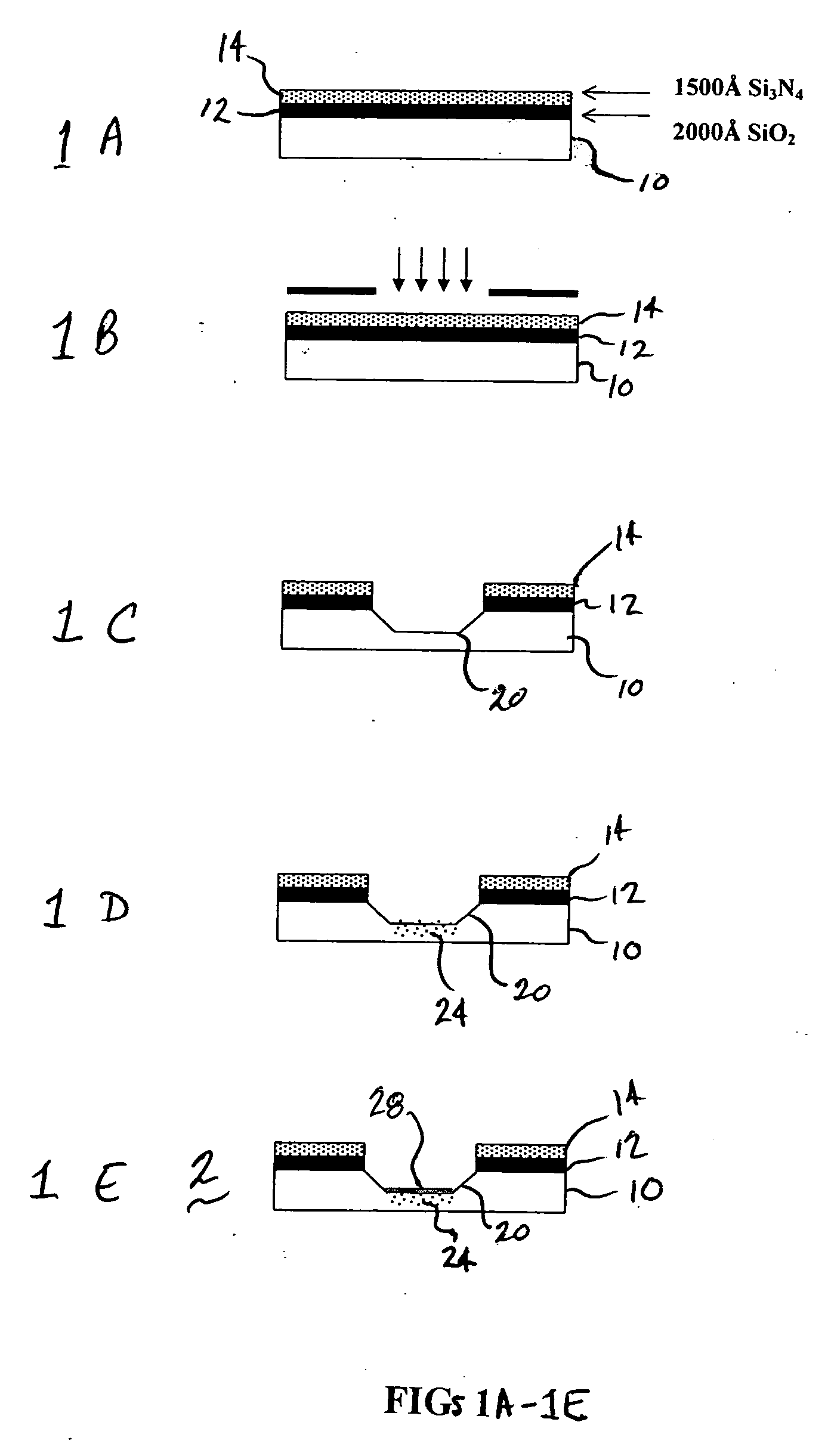Micromachined heaters for microfluidic devices
a microfluidic device and heater technology, applied in semiconductor devices, semiconductor/solid-state device details, electrical apparatus, etc., can solve the problems of device burnout, heavy ion implantation is an expensive process, and further increase in current only broadens the active area of heating elements, and achieves low aspect ratio
- Summary
- Abstract
- Description
- Claims
- Application Information
AI Technical Summary
Benefits of technology
Problems solved by technology
Method used
Image
Examples
experiment 2
[0039] A set of microheaters was made by low dose boron implantation in accordance with the method of FIGS. 1A-1E. The resistance was a function of dopant concentration. The wafers were annealed at 400.degree. C. in presence of argon. The annealing brought some of the dispersed dopant ions closer to the surface, thus forming a uniform conductive layer. Inadequate annealing could result in a bulk of the implanted ions being distributed too deep into the substrate to contribute to conductivity. Two different implantation regimes were used. Furthermore, in an effort to improve heating characteristics, each was subjected to two different anneal times.
[0040] In order to arrive at the proper energy and dose of the boron source, the concentration following the annealing was simulated using a computer program called SUPREME III (Stanford University Process Emulator). This determined the penetration depth of the boron atoms. For the first run, implantation energy was 80 keV at a dose of 1.ti...
experiment 3
[0044] Effect of Glass Coating SOG was applied on the channels to see how it affected the temperature characteristics. A glass thickness of 1 .mu.m was applied to the microchannels employing aluminum alloy conductors in accordance with FIG. 2E. This was followed by hard plate baking at 80.degree. C., 150.degree. C. and 250.degree. C. for 40 seconds each. Then the wafers were cured in a furnace at 425.degree. C. for 60 minutes.
[0045] The rise in temperature as a function of time with the spin-on glass coating are presented in FIG. 6 which shows temperature characteristics of 1 .mu.m metal deposited heater type A and D with Spin-On-Glass, at an applied voltage of 43 V. In all cases, the temperature stabilized in less than 10 seconds. A thinner glass layer will permit the microheater of the present invention to attain higher temperatures.
[0046] Stability
[0047] It has been found the microchannel heaters of the present invention, especially those having the characteristics of type A in T...
PUM
| Property | Measurement | Unit |
|---|---|---|
| temperatures | aaaaa | aaaaa |
| temperatures | aaaaa | aaaaa |
| thickness | aaaaa | aaaaa |
Abstract
Description
Claims
Application Information
 Login to View More
Login to View More - R&D
- Intellectual Property
- Life Sciences
- Materials
- Tech Scout
- Unparalleled Data Quality
- Higher Quality Content
- 60% Fewer Hallucinations
Browse by: Latest US Patents, China's latest patents, Technical Efficacy Thesaurus, Application Domain, Technology Topic, Popular Technical Reports.
© 2025 PatSnap. All rights reserved.Legal|Privacy policy|Modern Slavery Act Transparency Statement|Sitemap|About US| Contact US: help@patsnap.com



